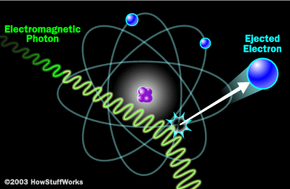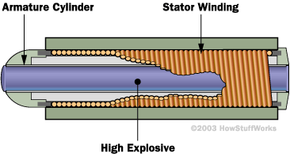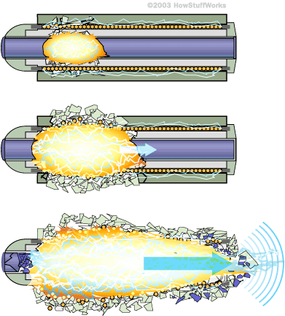Anyone who's been through a prolonged power outage knows that it's an extremely trying experience. Within an hour of losing electricity, you develop a healthy appreciation of all the electrical devices you rely on in life. A couple hours later, you start pacing around your house. After a few days without lights, electric heat or TV, your stress level shoots through the roof.
But in the grand scheme of things, that's nothing. If an outage hits an entire city, and there aren't adequate emergency resources, people may die from exposure, companies may suffer huge productivity losses and millions of dollars of food may spoil. If a power outage hit on a much larger scale, it could shut down the electronic networks that keep governments and militaries running. We are utterly dependent on power, and when it's gone, things get very bad, very fast.
Advertisement
An electromagnetic pulse weapon, or EMP, is designed to take advantage of this dependency. But instead of simply cutting off power in an area, a large EMP would actually destroy most machines that use electricity. Generators would be useless, cars wouldn't run, and there would be no chance of making a phone call. In a matter of seconds, a big enough EMP could thrust an entire city back 200 years or cripple a military unit.
Let's examine the basic concept behind EMPs, and we'll take a look at some major bomb technologies.



